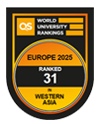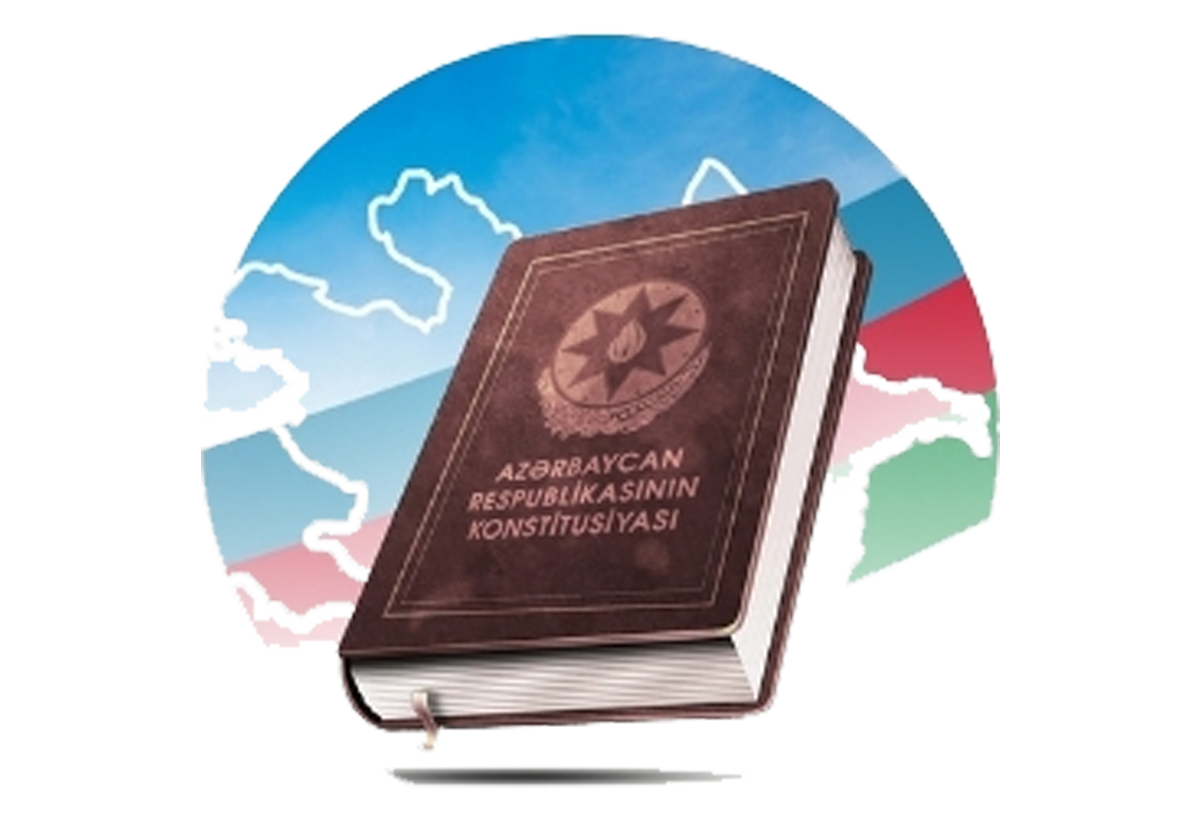WESTERN AZERBAIJANIS WILL RETURN TO THEIR HISTORICAL LANDS
Historical existence shows that states in different eras have been able to overcome difficult challenges and move towards the future thanks to the high cultural characteristics of a determined, heroic people. Time is the most accurate source in terms of correct assessment of historical events. The culture and heroism of a people, a nation live in the territories where it historically lived. From this point of view, the territories of Azerbaijan are considered to be one of the oldest historical human settlements where civilization began to develop. All historical sources prove that the territories covered by current Armenia were once densely populated by Azerbaijanis. With reference to historical maps, the place names and human settlements of these areas are clearly indicated. Even the place names Zangibasar, Vedibasar, Iravan mahali, Goyche mahali have been confirmed and transferred to the maps. The regions whose names we mentioned were considered the largest areas of Western Azerbaijan. Science, art, music, especially Ashiq creativity developed in the Middle Ages in the districts inhabited by Azerbaijani Turks existing in today's Armenia. The people who historically lived in Western Azerbaijan mainly engaged in agriculture, cattle breeding and handicrafts due to their geographical conditions. However, as a result of the ethnic cleansing policy against Azerbaijanis in the Caucasus in the last two centuries, Azerbaijanis faced severe deprivation and suffered a national tragedy. To study the history, language and cultural heritage of a people, it is necessary to look at the areas where it was historically inhabited. The original inhabitants of Western Azerbaijan were Azerbaijani Turks. Azerbaijani Turks in the territories of present-day Armenia BC. They started living in the II century. One of the first ancient tribes living in these areas was the Cimmerians. The Cimmerians, as an ancient Turkic tribe, settled in these areas. Undoubtedly, one of the factors that fundamentally proves this fact is historical toponyms. The name of this tribe was reflected in the place names of today's Armenian territories. Even near Yerevan, the capital of the current Republic of Armenia, there were place names called Gamarli and Etchmiadzin districts, which reflected the name of the ancient Cimmerian Turkic tribe. Historical sources once again confirm that the current territories of Armenia are ancient Turkish territories.
It was impossible to find any trace of Armenian in the toponyms of these areas. Even anthropologists emphasize during their archaeological research that the remains of Armenians did not cover more than two centuries. After the occupation of the Iravan Khanate, according to the 15th article of the Turkmenchay Treaty signed in 1828 between Tsarist Russia and the Gajars, thousands of Armenian families from Iran and the Ottoman territories settled on fertile lands in the areas of Iravan, Karabakh, Nakhchivan, and Borchali, and were exempted from taxes and duties for 6 years. The purpose of this resettlement policy of Tsarist Russia was to create a buffer zone between the Ottomans and Azerbaijan, and after this insidious plan was carried out, its directions were further expanded.
Both the Gulistan and Turkmenchay treaties were a web of betrayal against both Western and Southern Azerbaijanis. The purposeful policy of genocide against Azerbaijanis in the Caucasus left indelible marks on the history of this nation. It is a fact that Western Azerbaijan is a part of our entire Azerbaijan.
Genocide, deportation, and terrorist acts against the aboriginal population - Azerbaijanis, who became the victims of history's injustice, which started at the beginning of the 19th century, were carried out step by step. Genocide against Azerbaijani Turks in 1905-1907, acts of genocide in Baku and other areas of our country in 1918, active participation of Armenians in repressions in 1930s clearly reflected their anger and hatred towards Turks. Because during the genocide, Dashnaks practiced their nail-biting heroism on civilians, innocent women, old people and children. In 1948-1953, more than 150 thousand of our compatriots were deported from the lands of Western
Azerbaijan. Based on the new slogan, they started to realize the idea of Armenia without Turks. Finally, in 1987-1991, about 250,000 of our compatriots were forced to leave their ancestral lands from the territory of Western Azerbaijan, today's Armenia.
The injustice done to our people, who have been through the difficult stages of history, ultimately resulted in their homesickness and genocide. After the resignation of Heydar Aliyev from his post in Moscow in 1987, Armenians became active and organized the mass deportation of Azerbaijanis from Western Azerbaijan in 1987-1991 under the auspices of the USSR state. Undoubtedly, this was the expected result of the unjust position imposed on the people of Azerbaijan as the final chords of the USSR policy. In later historical periods, this injustice was not given a legal value. Only the great leader Heydar Aliyev gave political value to this historical injustice. Regarding this historical event, Heydar Aliyev wrote on December 18, 1997, "On mass deportation of Azerbaijanis from their historical and ethnic lands in the Armenian territories in 1948-1953", "Genocide of Azerbaijanis" on March 26, 1998, and 2001 On August 22, 2008, he signed decrees "On solving the settlement problems of Azerbaijanis displaced from their historical lands in the territory of Armenia as a result of the ethnic cleansing policy carried out by Armenian nationalists". President Ilham Aliyev successfully continues this policy of the great leader. Since the concepts of motherland, language, nation, homeland are sacred deeds, our state is fighting justly for the sake of the integrity of our lands. President Ilham Aliyev has repeatedly emphasized the importance of studying the historical geography, ethnic composition, political and scientific aspects of Western Azerbaijan. History loves the truth and the concept of homeland is formed in history itself. From this point of view, the ancestry, language, literature, music, traditions, cultural monuments and, in a word, culture of our people have been formed for centuries in Western Azerbaijan, which is the historical land of Azerbaijan, in the territories of present-day Armenia. Since Islam spread in the ancient Iravan Khanate and in the territory of Armenia as a whole since the 7th century, there are hundreds of religious places of worship, stone monuments, mosques and Muslim settlements in these areas. It is mentioned in the historical sources that it is possible to get enough information about the religious monuments that existed in these areas and the places where Muslim Turks lived from the works of many world travelers who visited Yerevan. The sources also show that in the historical period up to 1912, 42 mosques operated in the territory of Western Azerbaijan, especially in Iravan district, 33 in Echmiadzin district and 35 in Zangezur district. In general, the number of cultural and historical monuments in Western Azerbaijan was close to 8,000. However, almost all of them were destroyed and became victims of vandalism policy. A large number of historical-architectural monuments, mansions-caravansaras with oriental ornaments, mausoleums existed in the territories of present-day Armenia, which are our historical lands. Our national-cultural heritage, which preserves historical truths in these architectural monuments, has become a victim of Armenian vandalism. The neighborhood called Tepebashı in Yerevan, which reflects the history of ancient Azerbaijan, covered a large area. Unfortunately, this historical place inhabited by Azerbaijanis was completely destroyed. Currently, the Armenian state is building new buildings in the areas called Tepebashı, and they want to erase the traces of the residences belonging to Azerbaijanis from the pages of history. In 1918-1921, after the establishment of the first Armenian state - the Republic of Armenia in the historical lands of Azerbaijan, Armenians once again showed their vandalistic and destructive attitude towards the material and cultural heritage belonging to Azerbaijanis. This process continues from the last stage of deportation, which started in 1987, until today. They tried to erase our cultural and historical monuments from history, as if they were the "real owners" of these places.
Of course, this idea was an indicator of their sick thinking and fabrications as a nation. Among all historical monuments in Western Azerbaijan, the Khan's Palace and Sardar Mosque in Iravan District stood out for their historical ornaments. Even this magnificent mosque was popularly known as Abbas Mirza Mosque at the time. This monument was also completely destroyed and replaced by new construction objects. All the minarets of the Blue Mosque built in 1766 were demolished and destroyed, only one main mausoleum was preserved, which is presented to the world community under the name of the Persian temple. According to official data, at the beginning of the 20th century, there were 310 mosques in the territory of Iravan governorate, each of which included an architectural art. The deportation policy, which continued in stages in the 20th century, resulted in the appropriation, destruction and destruction of our historical monuments in our ancient territories, and the Armenianization of our place names. This shows that on the stage of history, our people lived the 20th century as the century of tragedies, massacres and genocides. As in Western Azerbaijan, during the 30-year occupation period in Karabakh and Eastern Zangezur, they looted and destroyed our ancient monuments and our entire cultural heritage. Together with our people, our national wealth has been a victim of the vandalism policy. Armenia grossly violated the provisions of the Hague Convention "On the Protection of Cultural Resources During Military Conflicts" and the Paris Convention "On Illegal Circulation of Cultural Resources" and looted Azerbaijan's cultural resources. Both in our lands of Western Azerbaijan and in our Karabakh, our monumental cultural monuments with ancient history were either completely destroyed and destroyed or were presented to the public as examples of "Armenian culture". The destruction of Turkish symbols and ancient Turkish writings on architectural monuments is the heaviest blow to the national culture of our people. Although they try to introduce themselves to the world as an "ancient nation" and a "civilized nation", history has always shown the exact opposite. History has proven that the culture of the Azerbaijani people is as human as it is national, as eternal as it is human.
The liberation of Karabakh, the cradle of culture of the Azerbaijani people, from the Armenian invaders, and the return of the West Azerbaijanis to their ancestral homeland, was the main direction of Heydar Aliyev's general activity. In this regard, the great leader Heydar Aliyev noted in one of his speeches: "I believe that Ilham Aliyev will be able to finish the fateful issues, plans and works that I could not finish. I believe in him as much as myself and have great hopes for the future."
Following the advice of his father, Commander-in-Chief, under the leadership of the President of the country, Ilham Aliyev, our lands that were under occupation for nearly 30 years were liberated due to the lives of our martyrs, the blood of our veterans, and the bravery of our army. The people of Azerbaijan now had their eternal land. The 44-day Patriotic war resulted in the capitulation of Armenia, the end of the nearly 30-year occupation, and the restoration of our territorial integrity. With the liberation of Karabakh, new priorities appeared in the foreign and domestic policy of Azerbaijan. By liberating Karabakh and Eastern Zangezur, the Azerbaijani Army has already paved the way for the return of all our compatriots to their historical ancestral lands. In the implementation of this fair policy, not only our state, but also public organizations have great responsibilities. The need for creating the West Azerbaijan Community is very important from this point of view.
The historical memory of the Azerbaijani people always preserved the love for our native lands. Today, the truths of Azerbaijan are conveyed to the world community. In this important matter, the Western Azerbaijan Community, which was established on the basis of the Refugee Society on August 3, 2022, became a center that was very active in ensuring the social and cultural unity of the Azerbaijanis and their heirs who were deported en masse from the territories of Armenia. This Community was the legal successor of the "Azerbaijan Refugees Society" Public Union, which had been operating since 1989. The Board of Directors of the Union is active at the international level. The purpose of the community is to achieve the social and cultural unity of Azerbaijanis who were deported en masse due to their ethnicity in certain periods of history, to restore all their rights at the international level to return to our ancestral lands, and to convey the rich historical and cultural heritage created by the Azerbaijani people on the territory of Armenia to the world community. On December 24, 2022, at the opening of the administrative building of the West Azerbaijan Community, in a meeting with a group of intellectuals originally from West Azerbaijan, President Ilham Aliyev said: "West Azerbaijan is our historical land, which is confirmed by many historical documents, historical facts, historical maps and our history itself ". President Ilham Aliyev noted that there are many reasons to say this, our people have made great sacrifices for centuries to protect their rights and to live in their historical lands.
At the meeting, President Ilham Aliyev stated that information about the destruction caused by Armenians in Western Azerbaijan must be conveyed to the world community through the line of this community. Bringing it to the attention of our intellectuals, he emphasized that especially historians should conduct research in this direction, write research works reflecting the facts of Azerbaijan, and these works should be translated into foreign languages.
Although the Western Azerbaijan Community has been active for a short time, the documents adopted by it are of special importance. Among these documents, the accepted concept of ensuring safe and dignified peaceful return of Azerbaijanis expelled from the territory of present-day Armenia - Concept of Return occupies an important place. So, in the first paragraph (introduction) of this concept, the main goal of the Western Azerbaijan Community was officially stated to be dealing with the restoration of the rights of Azerbaijanis expelled from the territory of Armenia, and at the same time, the goals and principles of the activity to be carried out by the Community for the return of Azerbaijanis forcibly deported from the territory of Armenia , preparatory and implementation measures are defined. It was rightly stated here that the Concept of Return was based on international law, historical facts, and serves to establish justice and peace.
In the Concept of Return, the calamities that befell our people in different years: the creation of the Republic of Armenia at the expense of Azerbaijani lands in 1918-1921 and the subsequent transfer of our lands to Armenians by the Soviet leadership, and the process of forced resettlement of Azerbaijanis from Western Azerbaijan continued in 1987-1991. At the same time, the historical and cultural heritage belonging to Azerbaijanis in the territory called Armenia, including the massive destruction of mosques and cemeteries, the changing of place names, and the implementation of systematic racial discrimination against Azerbaijanis, are reflected in the Concept of Return.
Ensuring the peaceful return to Western Azerbaijan forms the main line of the adopted Concept.
As a clear example of this, in the letter sent by the Western Azerbaijan Community to the Prime Minister of Armenia on March 11, 2023. The members of the community emphasized in the letter that the right of return was well established in the Universal Declaration of Human Rights, the International Covenant on Civil and Political Rights and other important international acts. In the letter, it was stated that the demands of Azerbaijanis to return to their homes in a peaceful way were inadmissible in a way that could harm the territorial integrity or sovereignty of Armenia.
The Western Azerbaijan Community continues its activities in political, legal, diplomatic, social and cultural directions. Thus, the Community called on the French Republic on March 16, 2023 and expressed serious concerns about the intolerant policy of France against ethnic and religious minorities.
On March 27, 2023, the West Azerbaijan Community addressed a letter to the Director General of UNESCO, Audrey Azoulay, stating that the destruction of Azerbaijan's cultural heritage in Armenia is a crime beyond humanity. Community members are requested to send a fact-finding mission to monitor the state of the cultural heritage. The letter also stated that the aim of the Armenian government, which destroyed the cultural heritage of Azerbaijan in a planned manner, was to create a mono-ethnic and mono-cultural space.
On March 30, 2023, the Western Azerbaijan Community, in response to the biased and untrue statement of the head of the European Union mission in Armenia, Markus Ritter, states that the European Union, including its mission in Armenia, should respect the rights of Azerbaijanis expelled from Armenia through impartial and detailed efforts in the field of human rights. and thereby support the achievement of lasting peace.
On April 15, 2023, the Western Azerbaijan Community issued a statement regarding the burning of the Azerbaijani flag in Armenia. The statement says that all this is an indication of the policy of ethnic hatred and Azerbaijaniophobia supported by the Armenian state against Azerbaijan and carried out in a systematic manner. Although the Armenians have deepened the hatred between the peoples and created an environment of fear and tried to prevent the Azerbaijanis from returning there, nothing can prevent the return of the Azerbaijanis who were forcibly displaced from their ancestral lands.
We believe that during this short period of activity, the West Azerbaijan Community's appeals to international organizations for the restoration of the rights of Western Azerbaijanis will play a special role in bringing the issue to the international world, and the state of Azerbaijan will ensure the return of West Azerbaijanis to their homeland.
Chairman of the Council of Intellectuals of the Western Azerbaijan Community Elkhan Huseynov



